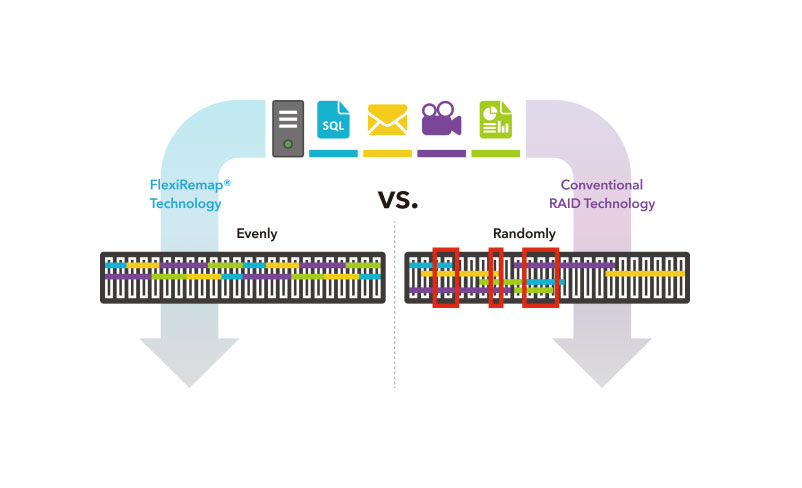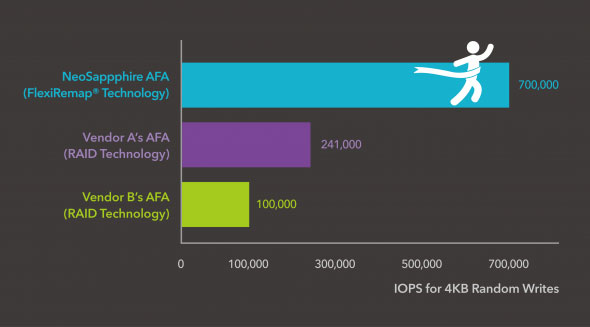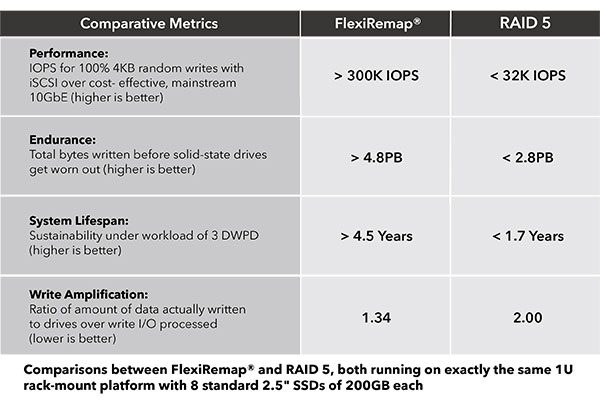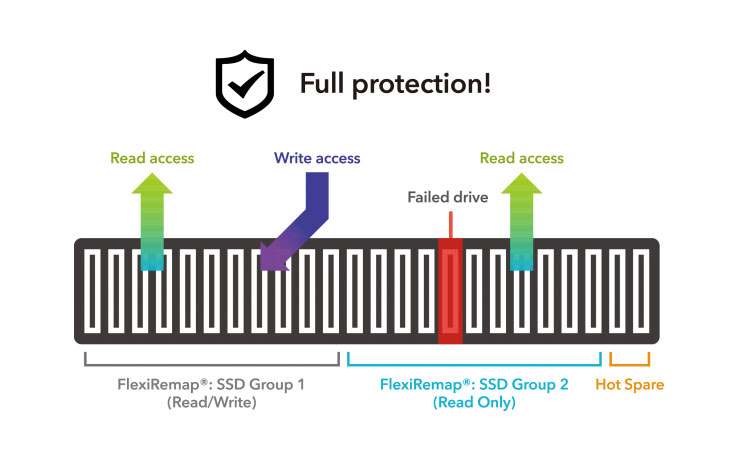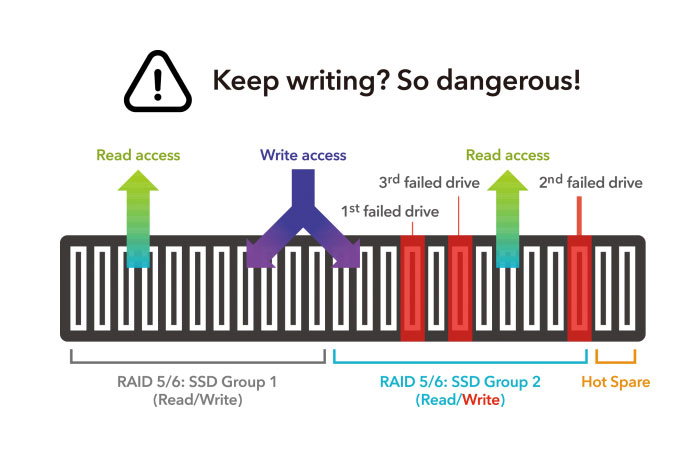AccelStor’s FlexiRemap® flash-oriented software is exclusively designed and optimized for flash memory and offers you advantages that conventional RAID cannot provide in the all-flash storage system. With AccelStor’s FlexiRemap®, IT operators can expect faster performance, longer SSD lifespan, and robust data protection with our award-winning FlexiRemap® technology.
-
![2022120608173372]() How FlexiRemap® and RAID Manage Data
How FlexiRemap® and RAID Manage DataTo cite an example, an SQL Server, Mail Server, Media Server and HPC Server all write data to two all-flash storage devices; one is powered by AccelStor’s FlexiRemap® and the other is configured with conventional RAID technology. FlexiRemap® EVENLY writes data to all the SSDs, while RAID randomly writes to all the SSDs. As shown in the figure below, the storage array with FlexiRemap® makes each SSD handle a similar amount of data, while conventional RAID allows some SSDs to bear more loading than others (as indicated by red rectangles). This is a key factor that leads RAID to a poor performance and shorter SSD lifespan.
-
![2022120608185120]() Huge Performance Difference
Huge Performance DifferenceIncreasingly connected devices, big data analysis, and the evolution of artificial intelligence are transforming the digital world at an incredible pace. Many of today’s applications are I/O intensive and generate the need for 4KB random write data access, which can be difficult to achieve. With FlexiRemap® technology, all-flash arrays fully utilize SSD performance without the drag of RAID generated bottlenecks. Conventional RAID operations push majority of I/O requests to some SSDs but not to others, resulting in performance bottlenecks as the requests are unevenly distributed among the SSDs.
When comparing the NeoSapphire™ all-flash arrays with those of other vendors, it’s clear there is a huge gap in IOPS performance for 4KB random write access.
-
![2022120608211958]() Maximized SSD Lifespan
Maximized SSD LifespanFlexiRemap® technology ensures that each SSD in the subsystem stores a similar amount of data. With the conventional RAID algorithm, some SSDs bear heavier workloads; these more frequently used SSDs usually have a higher failure rate than others.
A comparison test of FlexiRemap® and RAID 5 running on the exact same 1U rack mount hardware platform with eight SSDs of 200GB each reveals significant results as indicated below:
-The storage system with FlexiRemap® is capable of handling more than 4.8PB of data writes before the SSDs wear out, while RAID 5 can only handle less than 2.8PB of data writes in the same SSD lifecycle.
-If we overwrite the entire storage space of the all-flash array three times per day (3 DWPD), the system with FlexiRemap® lasts over 4.5 years while the system with conventional RAID lasts under 1.7 years.
-Longer lasting storage equipment lowers TCO (total cost of ownership), helping enterprises streamline their budget.
-
![2022120608212281]() FlexiRemap® — Robust Data Protection Mechanism
FlexiRemap® — Robust Data Protection MechanismFlexiRemap® offers the most robust and reliable data protection. If one SSD fails in SSD Group 2, for example, this group will then enter read-only mode to avoid the heavy loading from further writes. This decreases the chance of failure on a second drive in the same protection group during rebuilding.
AccelStor’s FlexiRemap® intelligently protects data by automatically entering read-only mode to avoid a second drive failure that could cause data loss.
-
![2022120608212346]() RAID 50/60 – Poor Data Protection
RAID 50/60 – Poor Data ProtectionIn RAID 50/60, when the tolerated number of SSD drives fail in a member RAID cell, the member RAID cell (like the SSD group in the FlexiRemap® concept) still takes incoming data writes. This will increase the probability of the degraded RAID cell suffering a fatal failure should another drive fail before all failed drives can be replaced and the initial RAID protection level restored. Critical data is then exposed to potential risk of loss caused by the RAID cell that suffered the fatal failure. Therefore, RAID 50/60 does not have enough protection levels to prevent more drive failures in the same RAID cell after the first drive failure has been detected.



